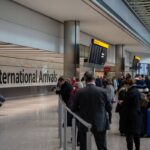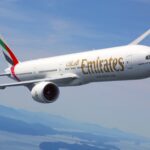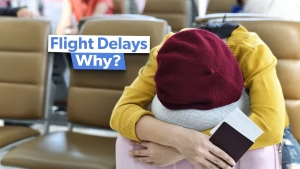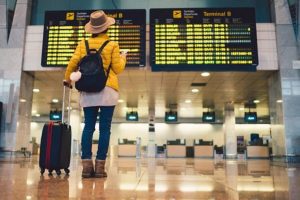As SAA and Kenya Airways make plans for a new pan-African airline, AviaDev Africa plays host to the discussions of opportunity and inspiration.
One of the biggest stories of African aviation this year is the tie-up between leading international carrier Kenya Airways and the rebirthed flagship airline South African Airways. Signed in November, the Strategic Partnership Framework anticipates improving profitability and bolstering financial strength for both airlines.
While details on the exact shape and size of this partnership remain to be seen, the venture is intended to provide strength in scale. Both carriers have lost traffic to African juggernaut Ethiopian Airlines, with Kenya posting a loss of $130.5 million in 2021. The story of SAA is well known, but with private investors now holding a majority stake, there is much hope for a better future.
Since the partnership agreement was firmed up, the two airlines have struck out in search of investors to support the new venture. They have also launched a headhunt for more airlines to join the cause, specifically seeking a third partner in the West Africa region, most likely from Nigeria, Ivory Coast, Ghana or Senegal.
This new airline group intends to unveil itself in 2023. But what will it look like, what will it be called, and will it work? Speaking at today’s AviaDev Africa conference, Simon Newton-Smith, Chief Operating Office for South African Airways, shed some more light on the plans for this new pan-African airline, and might have just found himself a new airline partner.
The Lufthansa model is applicable for Africa
Simon, although new to South African Airways, is an old hand in the aviation world. Among his previous appointments, he was a Vice President at Virgin Atlantic for a decade and a half, during which time the airline launched its joint venture with Delta. Harking back to those days, he provided us with some color on what we can expect from the new KQ/SAA venture.
“This is a model that exists around the world. And the most successful models that I’ve seen leverage the local brands, and the distribution of those brands in the home markets. I was fortunate enough to work within the Virgin Atlantic/Delta Air Lines joint venture, Virgin didn’t become Delta and Delta didn’t become Virgin. They both got unique strengths, and the goal is to leverage that.”
With this in mind, Simon anticipates both SAA and Kenya Airways retaining their own branding, Both have strong images and customers who are emotionally attached to those brands, so why would they want to change that? Any other airlines joining the venture would also retain their own identity. This is something that has not been tried in Africa in quite such a way in the past, but something we’re pretty familiar with in Europe.
“If you look at what the Lufthansa Group has achieved in Europe – these are airlines that, 20 years ago, figured out that they had to come together to be effective and efficient. They’ve done that really well. The Lufthansa Group is collective of multiple European brands, and there is absolutely a foundation for that model in Africa.”
The other thing Lufthansa does well is its segmentation, catering to all traveler markets. While SWISS, Brussels, Austrian and Lufthansa offer full-service options and business travel perks, Eurowings is one of the few low-cost offshoots from a full-service airline that has actually been a success. And now, long-haul low-cost is being tackled through the new Eurowings Discover brand.
How can this be replicated in Africa? Kenya Airways and SAA are both full-service airlines, offering valuable connectivity in long-haul leisure and business markets. But when it comes to that shorter haul, lower-cost travel, there’s a gap to be filled.
Is Air Botswana Africa’s answer to Eurowings?
Also, on the panel at AviaDev Africa was Getaneh WoldeMichael, Commercial Director of Air Botswana, who noted,
“Air Botswana is an airline that has been here for over 33 years. It has remained with the route network it is serving today, more or less, for all of those years.”
An airline that is not growing is not in a strong position, and WoldeMichael firmly believes that the route network should be grown. But justifying the need to go to further away destinations and launch new routes can be difficult.
Air Botswana has struggled to get into the black, running at a loss for more than a decade. It is 100% government-owned, despite efforts to privatize it several times in the past. It is around a year into a three-year strategic recovery plan, and privatization is on the table once more. But something else is on the table too, and that’s deeper partnership working, as WoldeMichael noted,
“Alliance partnerships are required to fill that gap [in the route network]. As you all know, Lufthansa came up with a new arm called Eurowings, which targets tourist destinations. There is no answer from Africa for that – Air Botswana would be very happy to be part of such a response.”
Before the panel closed, Simon Newtown-Smith beautifully illustrated the situation facing African airlines,
“Frankly, a lot of loss-making Airlines on this continent need to come together in some shape or form to have a sensible conversation with institutional investors … you can have a very different conversation with a good plan about connecting a continent that has got a runway of 10, 20, 30 years … that is the conversation need to have not a conversation about two aeroplanes for next year. That’s not going to work.”
Turning to WoldeMichael, Newton-Smith added, “We need to start talking soon.” Could Air Botswana become the next addition to the KQ/SAA pan-African alliance? While that remains to be seen, right there is a demonstration of the power of getting back together in person and the positive outcomes it can bring.
Source: Simple Flying






